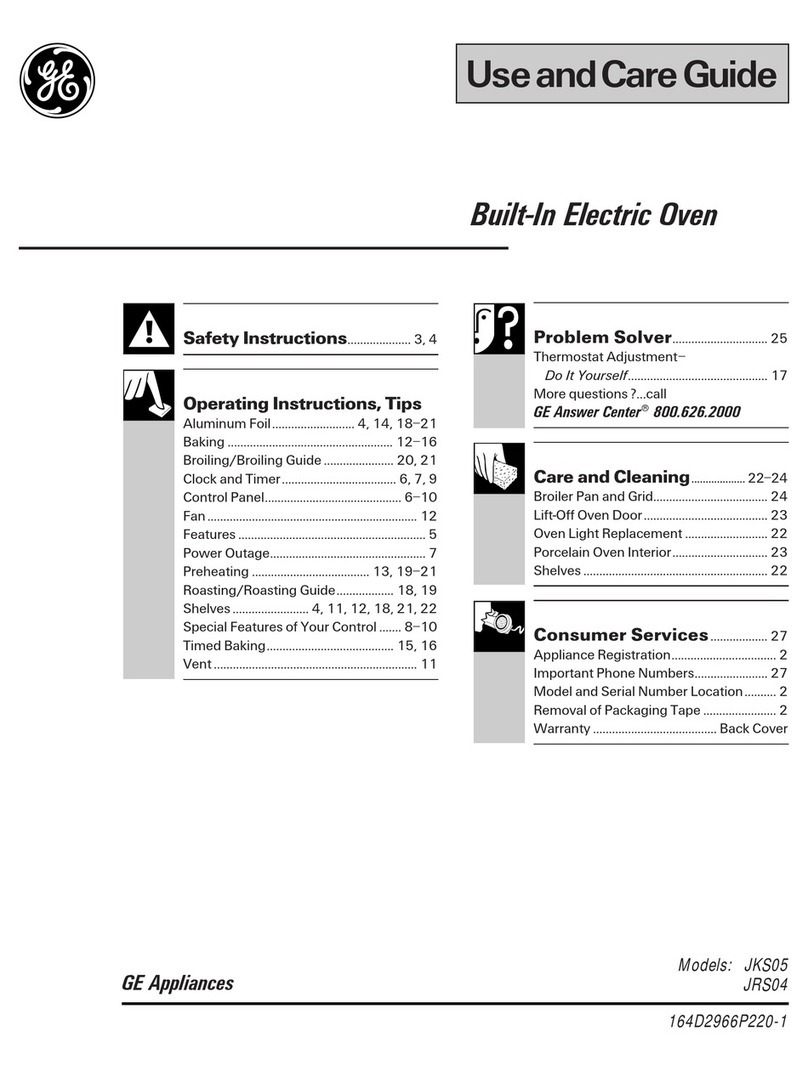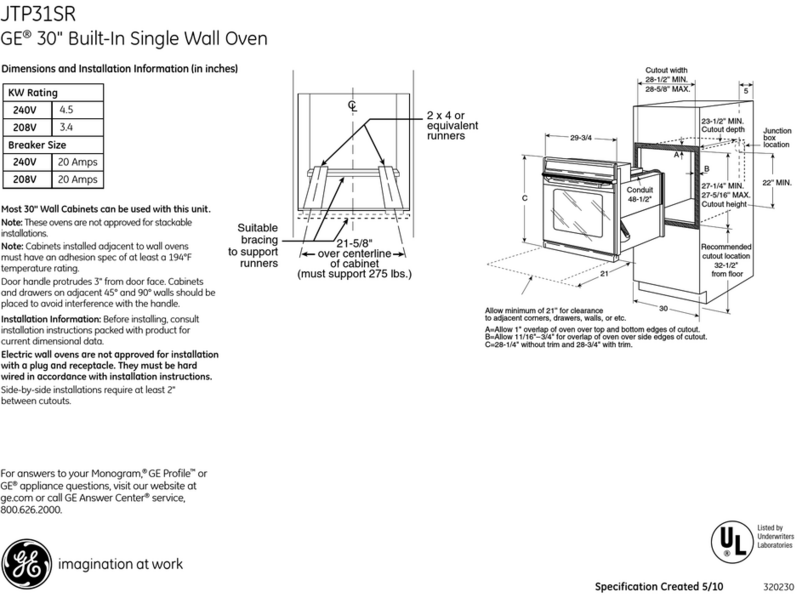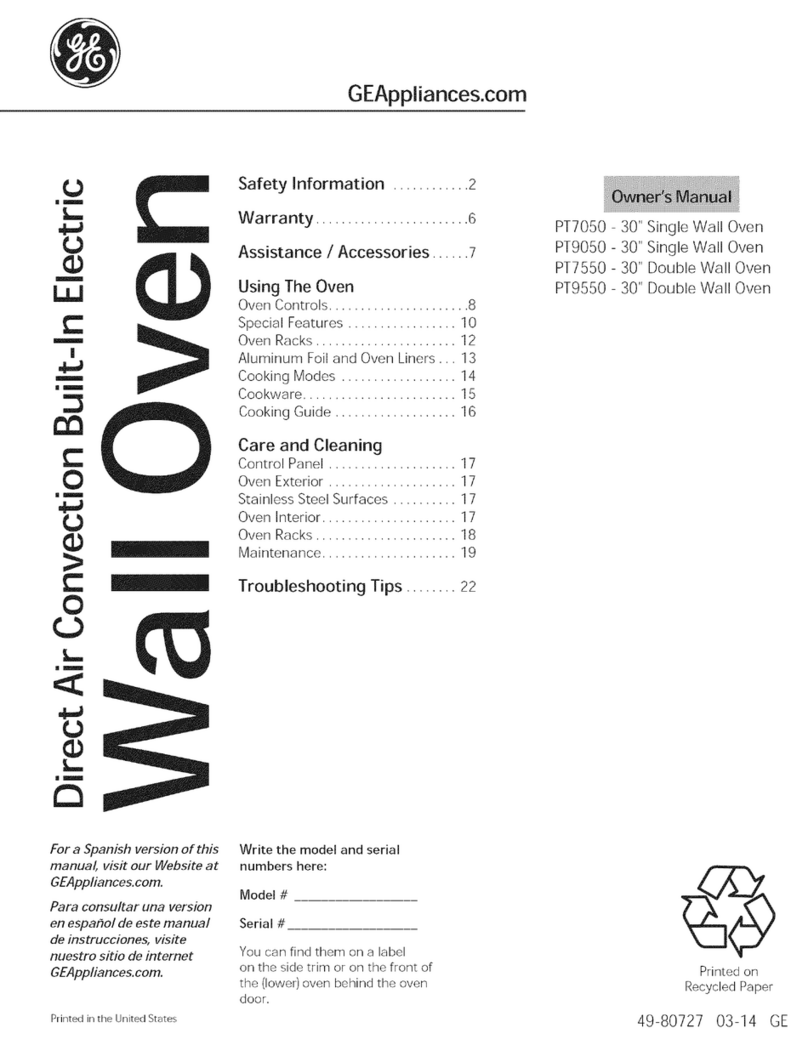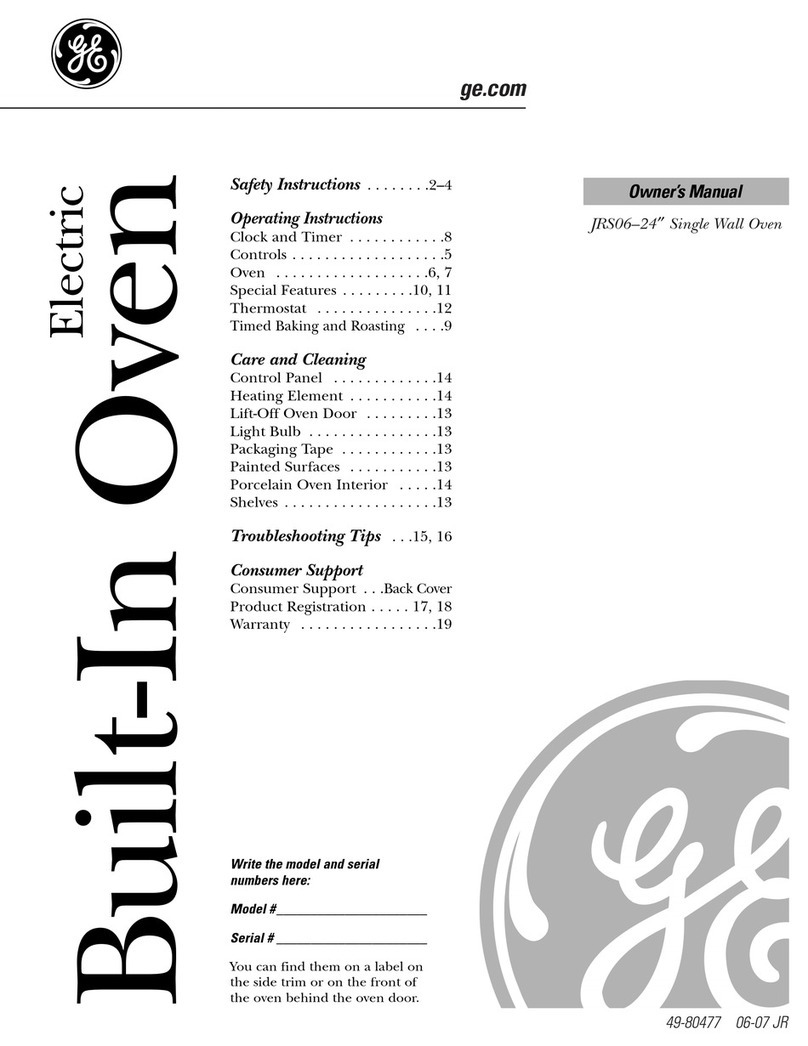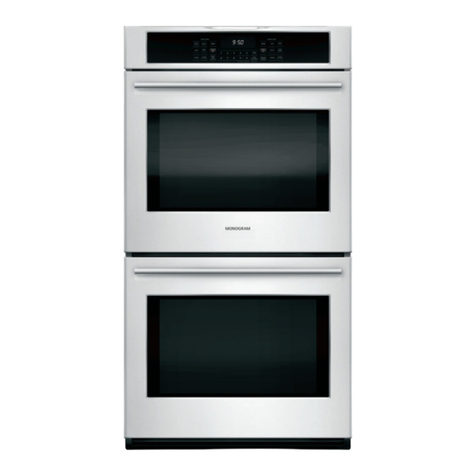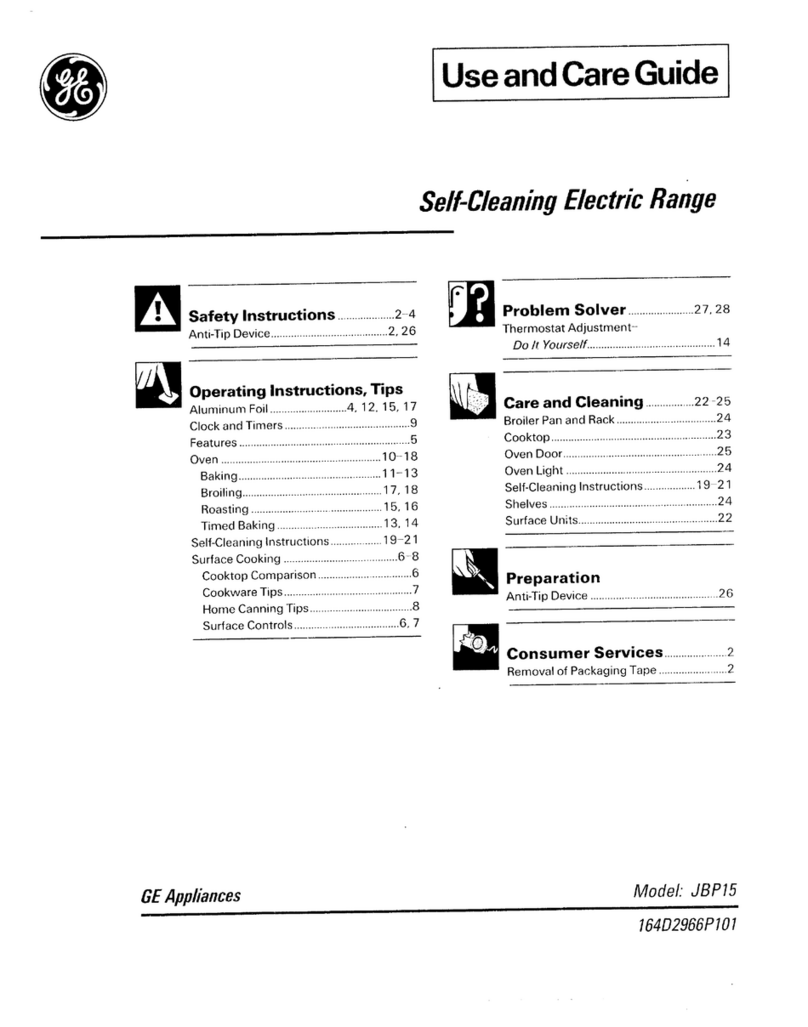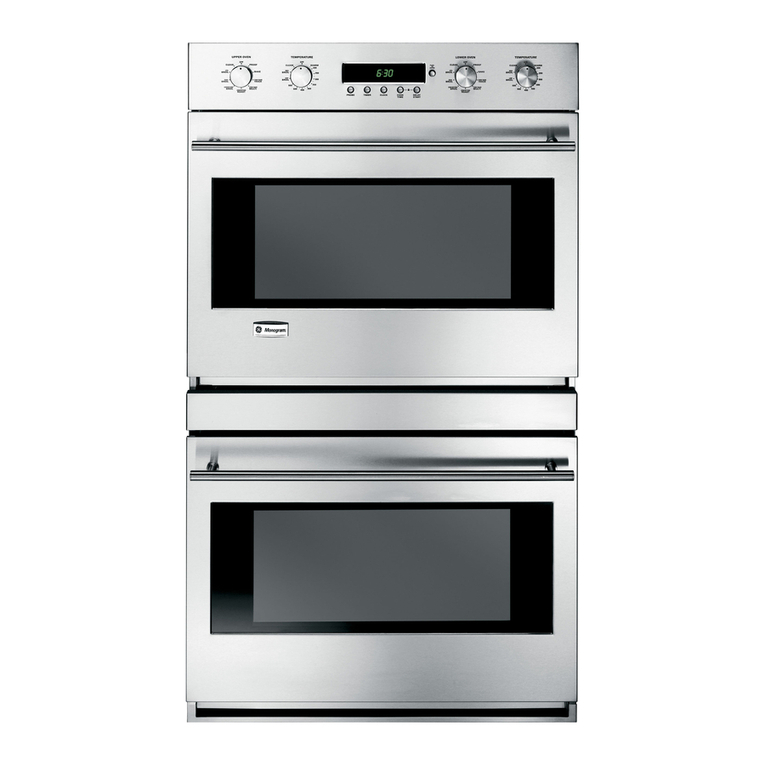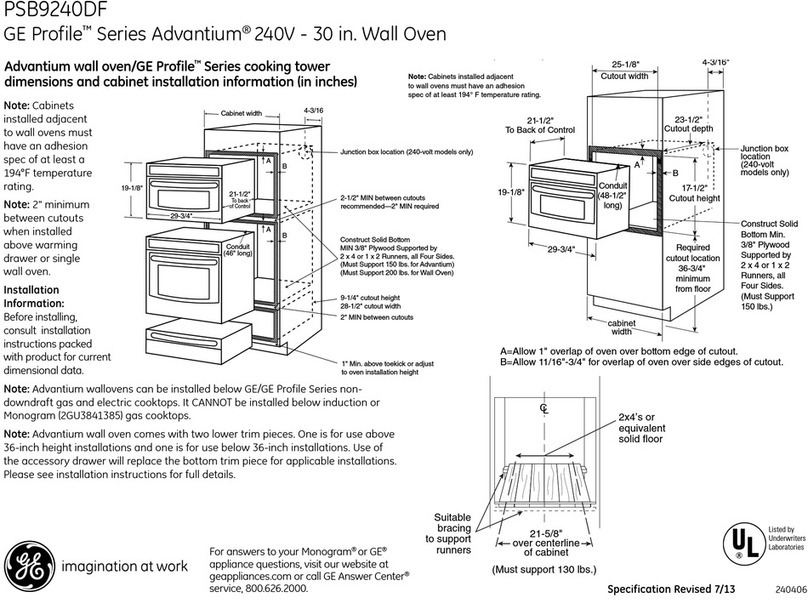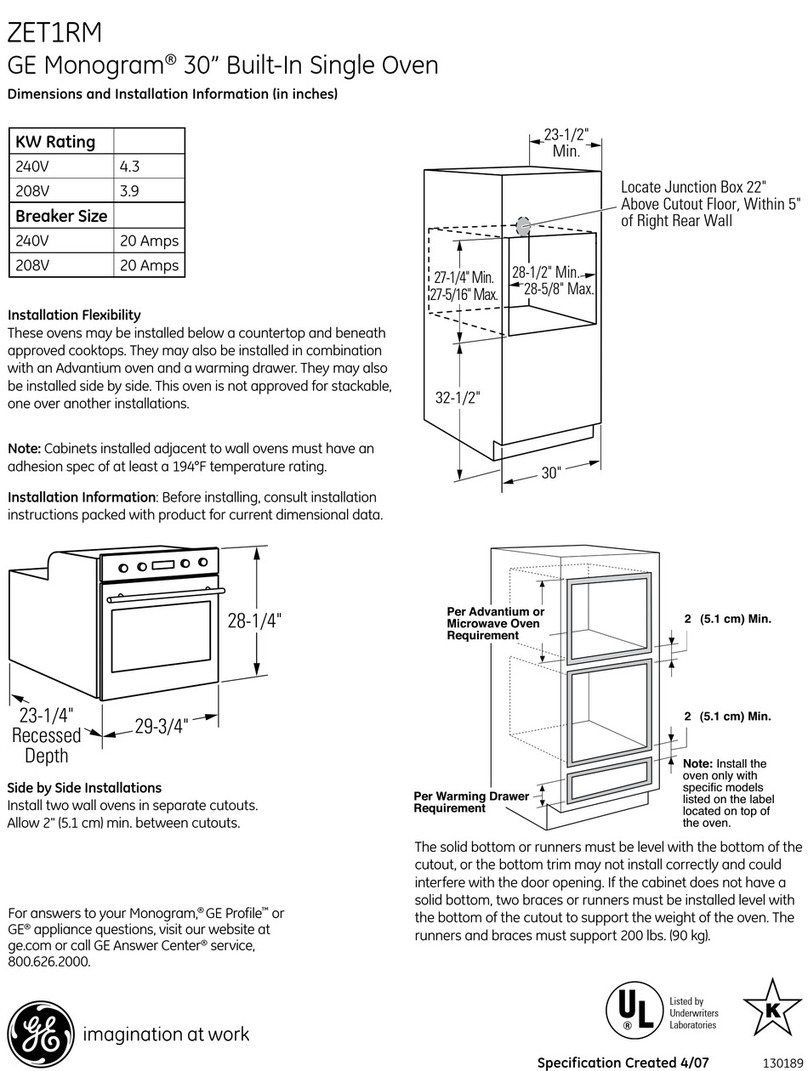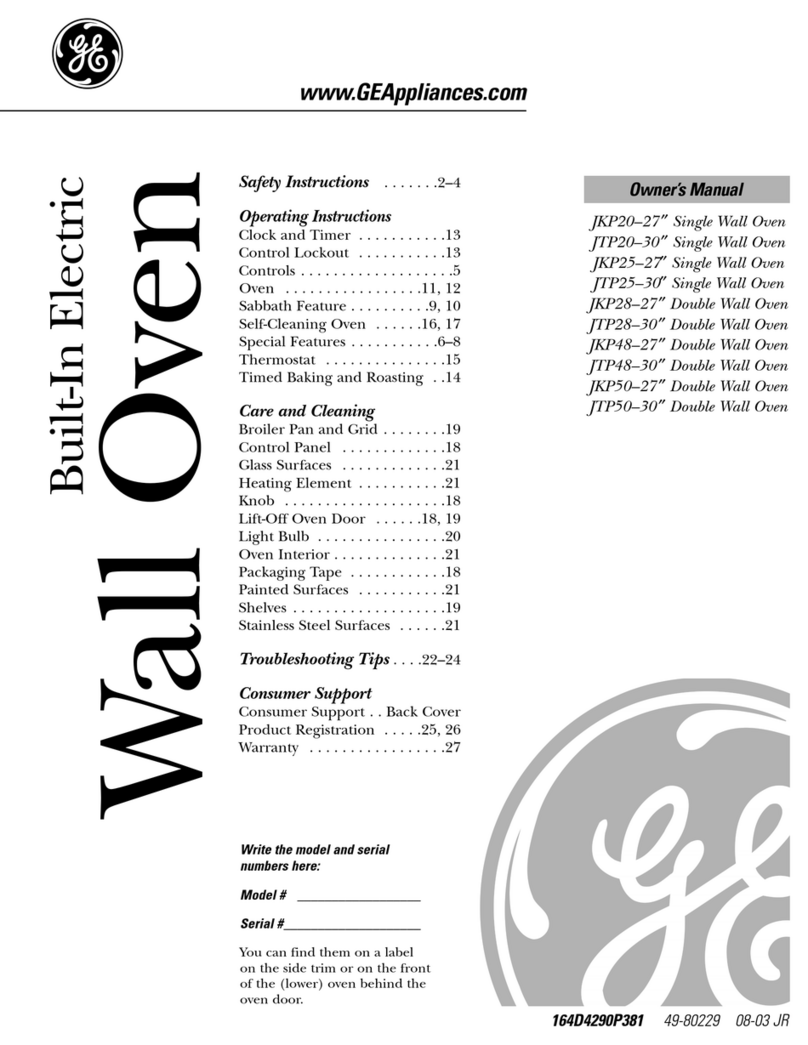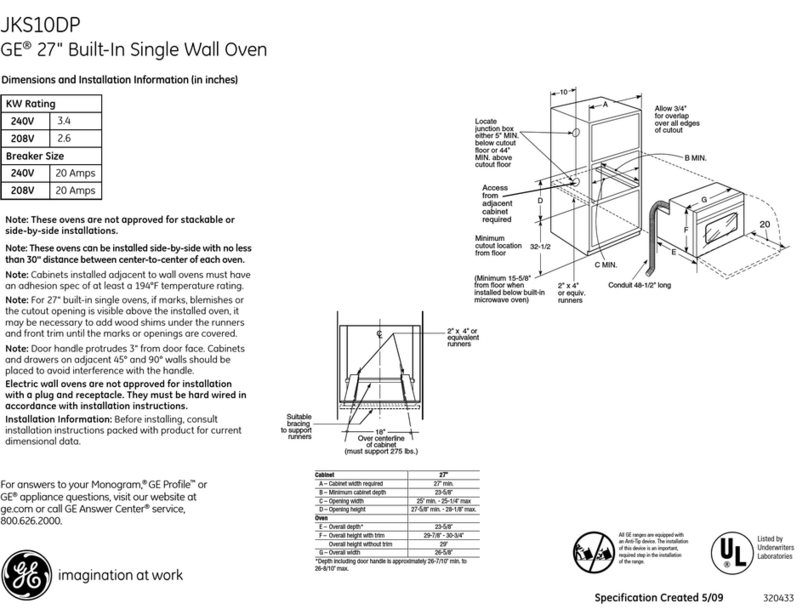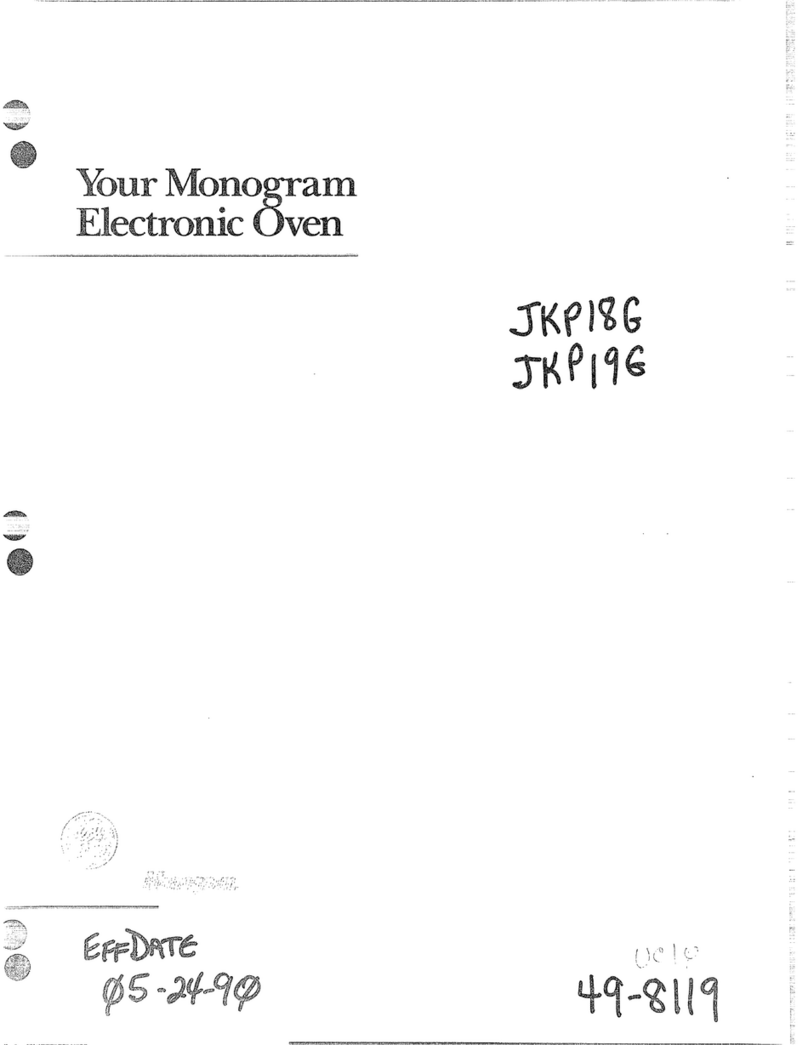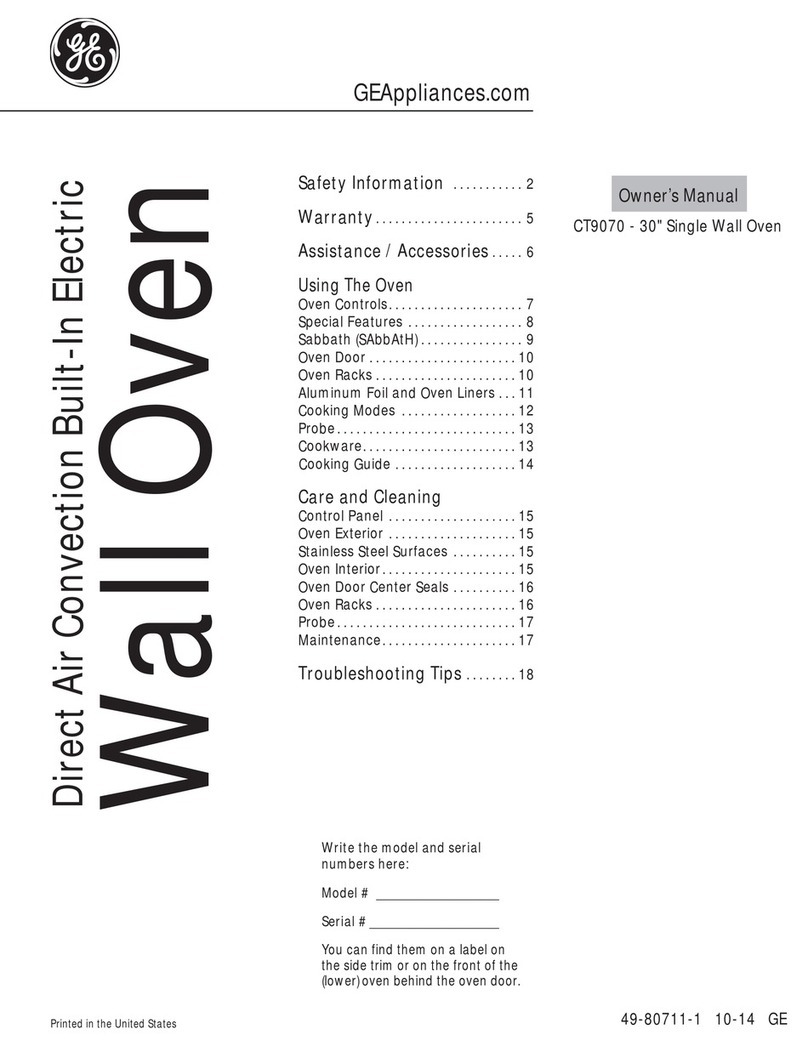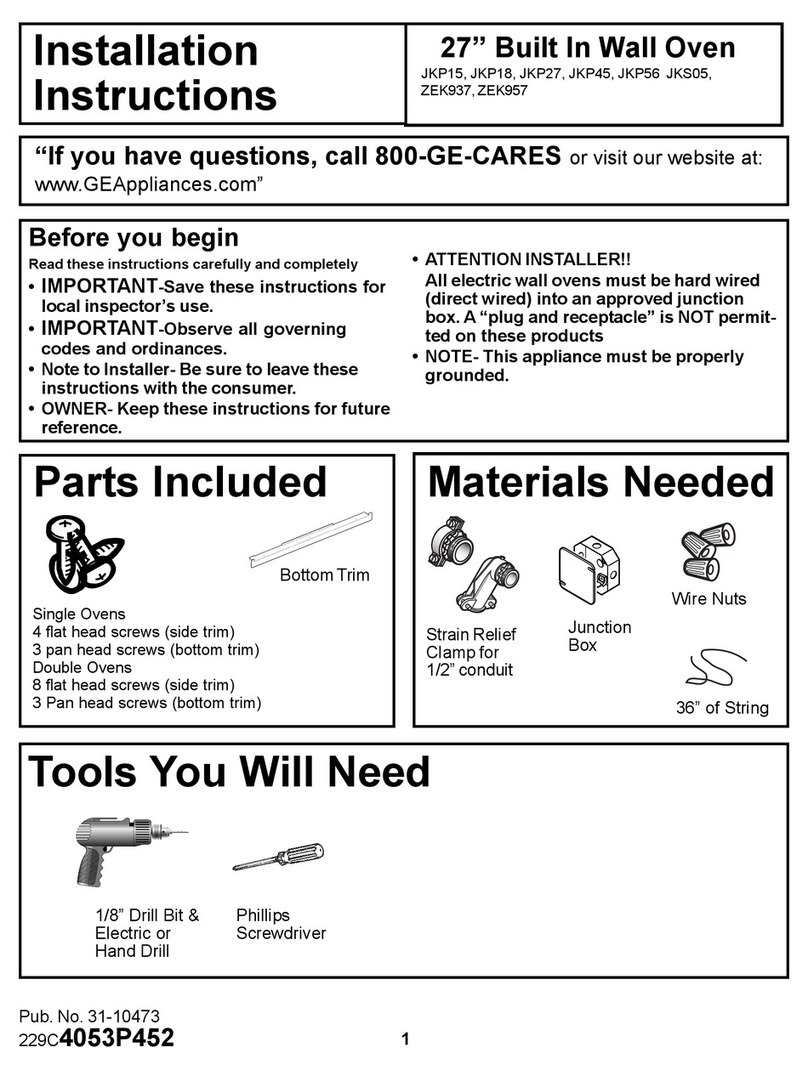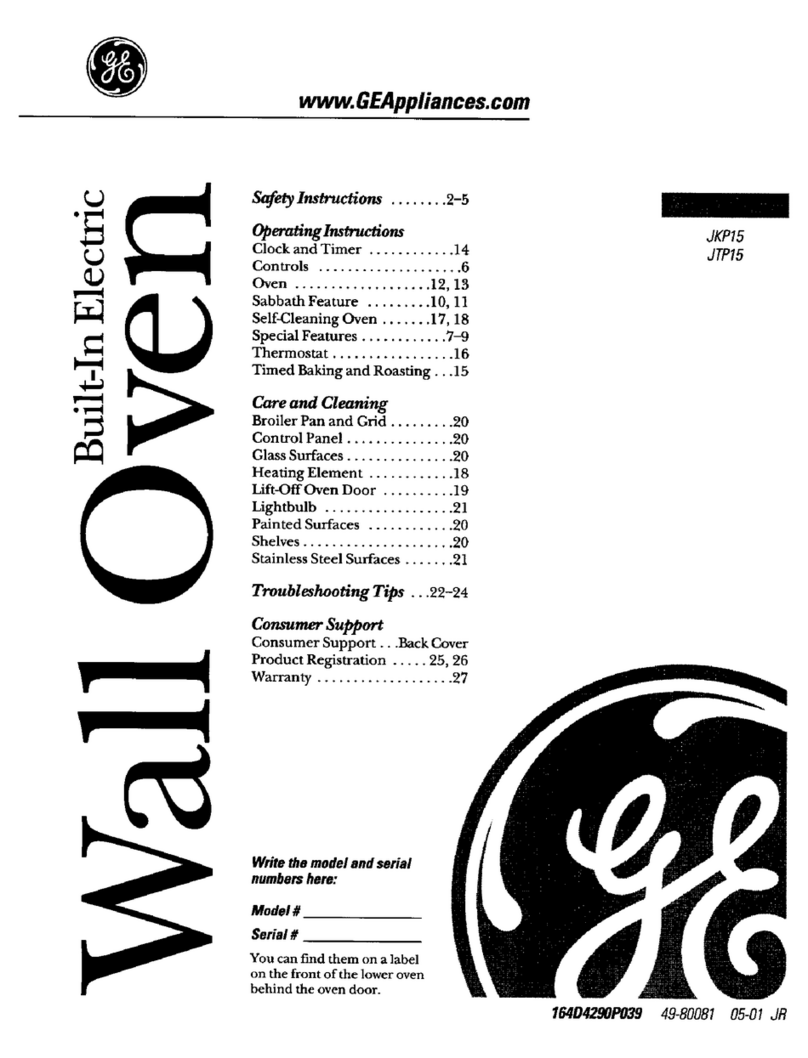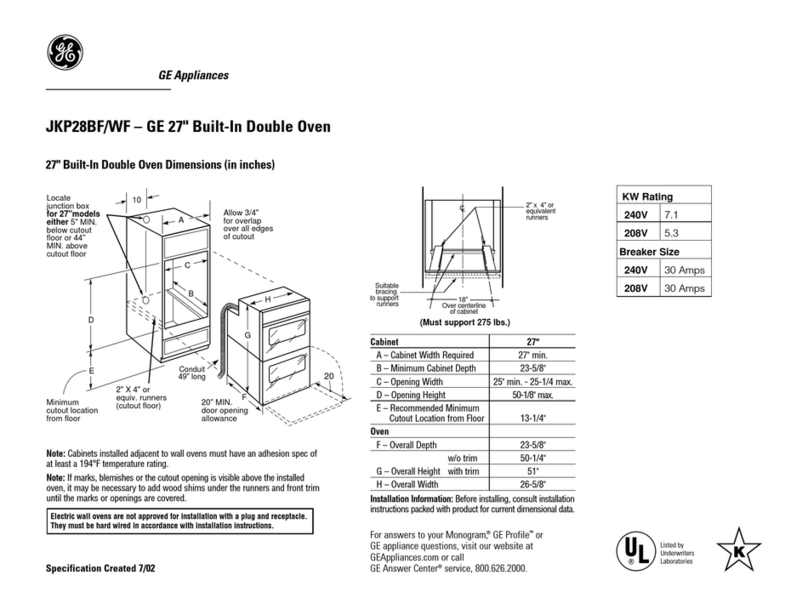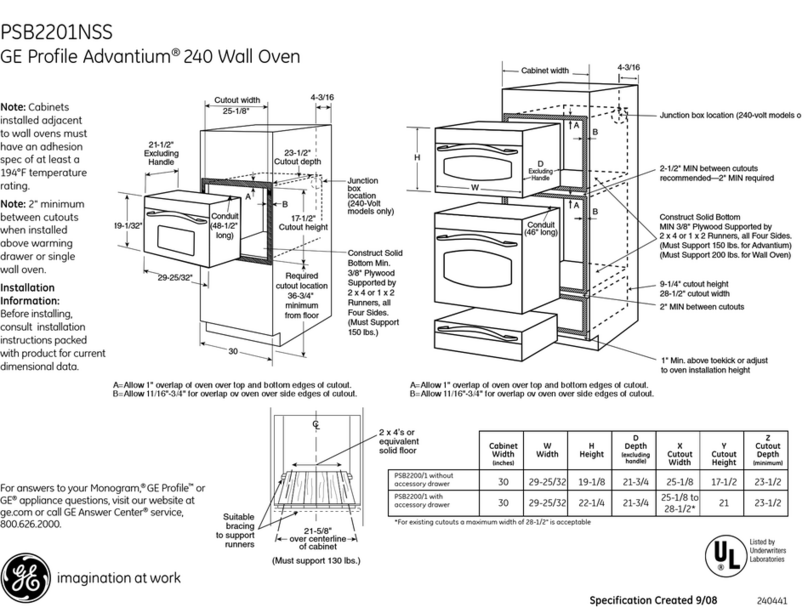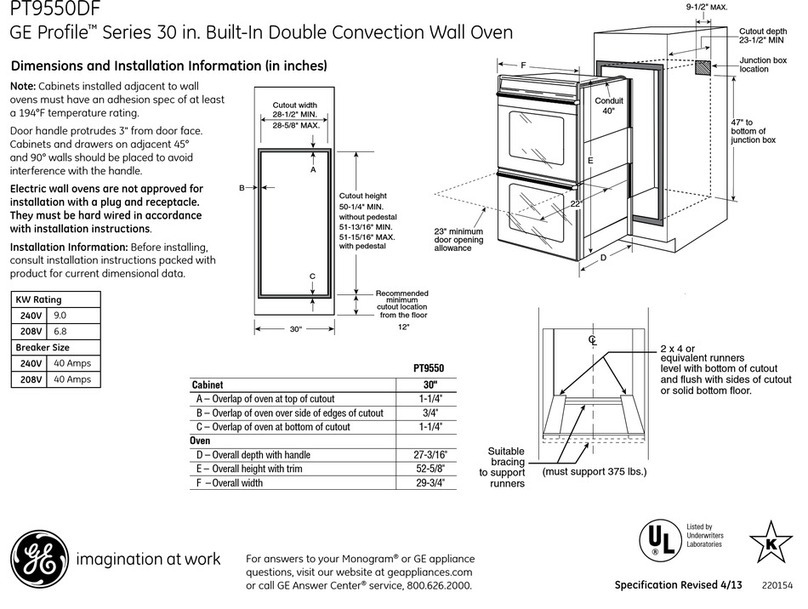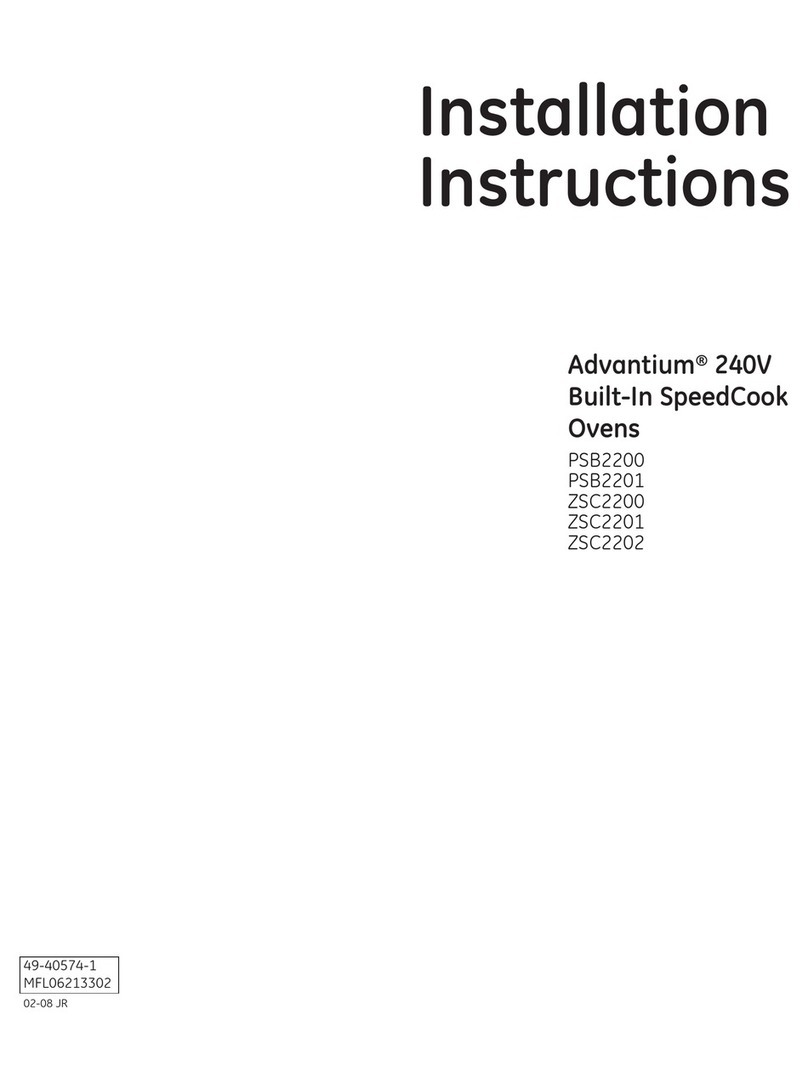
Installation Instructions
INSTALL THE OVEN
ELECTRICAL CONNECTIONS
An adequate electrical supply and outlet must be
used to operate the electrical parts of your oven.
r_ The oven cord has a three-prong plug and
must be used with a properly grounded
three-hole outlet with a standard 120 Volt,
60 cycle AC household current.
@
[]
@
Install the electrical outlet below the oven
on the left side, in a location that is easily
reached through the cabinet doors
(see Fig. 6).
If you do not have a three-hole grounded
outlet, have a qualified electrician change
your old one.
A grounding adaptor will be needed to
convert the old one until the outlet can be
replaced. This method is only temporary,
and a qualified electrician should test it to
be sure it meets requirements.
Always unplug the oven cord before making any
electrical repairs to the oven. When unplugging
the oven, always grasp the plug, never the cord.
WARNING: NEVERUSEAN
EXTENSION CORD TO CONNECT THE OVEN
TO THE ELECTRICAL SUPPLY.
WARNING: oonotunderany
circumstances cut or remove grounding
prong from oven cord, Failure to provide
proper polarization may create a hazardous
condition,
Plug with ground prong
properly polarized and
grounded receptacle
g
Polarized receptacle
properly grounded
Metal Eyelet
Ground
Rece
Plate Mountin(
Screw
Preferred Method
Fig. 4
Temporary Method
Fig. 5
I-_ GAS CONNECTIONS
WARNING: oonotoperate
the burners of this oven when using L.P.
(bottled) gas before converting the pressure
regulator and burner orifice for L.P. gas
usage.
See page 2 for all gas requirements.
_] Shut off the gas supply at the shut-off valve.
_'] Remove the existing oven (if necessary).
_'] Discard any old or used connectors.
WARNING: Never reuse old
flexible connectors. The use of old flexible
connectors can cause gas leaks and
personal injury. Always use new connectors
when installing a gas appliance.
[_] Be sure no strain has been placed on the
connecting line assembly.
To prevent any leaks, use a pipe joint
compound that resists the action of L.R gas
on the male outside threads.
Use a 1/2" gas inlet pipe.
The hole for the inlet pipe should be 8 1/2"
min. to 9 5/8" max. right of the centerline
and 23" behind the front surface of the
cabinet.
22"
I8 1/2"
_MIN_
9 5/8;'
JMAX.
i
Fig. 6
[
22"
to
28"
1
Recommended Main Shut-OFF Location
(The regulator also has a shut-off lever)
[] Install a shut-off valve to the pipe.
[_ Remove the storage drawer and the
oven door.
4
